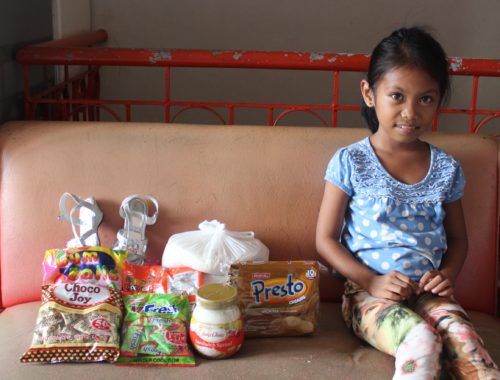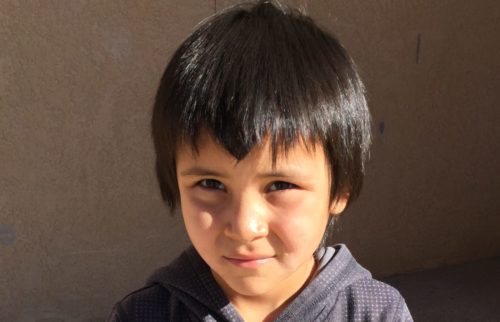The remote town of Crownpoint is in northwestern New Mexico, near the Arizona border and the vast Navajo Nation. Within the town is our affiliated project Lake Valley Boarding School. As one of the smaller schools within the Bureau of Indian Affairs system, with only 33 children in attendance, Lake Valley Boarding School provides a safe haven for Navajo students whose homes are far away, and whose families are desperately poor. In addition to the educational opportunities with which the children are presented at the school, the Children Incorporated sponsorship program helps each and every one of them to receive the basic needs they require on a regular basis.

Shelley with Alice and Judy
Were it not for Lake Valley Boarding School, our sponsored and unsponsored children coming from impoverished homes would have little opportunity to rise above their difficult socioeconomic circumstances. In Crownpoint, there is virtually no employment for adults. Broken homes, alcoholism, and inadequate food are a constant problem in many households, and most parents struggle to afford to properly care for their kids. Thankfully, the children are able to stay at Lake Valley Boarding School during the week —so five days a week, they are guaranteed three nutritious meals a day, and a healthy, supportive environment.
Every student supported
While visiting New Mexico, U.S. Projects Specialist, Shelley Oxenham, met with our Volunteer Coordinators Alice and Judy at Lake Valley Boarding School. Alice is a retired teacher, and Judy is currently a teacher at the school. It is rare for our affiliated projects to have every child that attends enrolled in the Children Incorporated program — especially at schools in the U.S., where attendance rates are usually high.
Also, having more than twenty children enrolled in our program is oftentimes too much work for our volunteer coordinators, because they typically already have many different jobs within the school. Thanks to the small number of students at this school, however, not only are all the children there enrolled in our program (currently thirty with sponsors, and three waiting for sponsors), but Alice and Judy are also able to give the children the individual support they need to overcome adversity in their lives.
Were it not for Lake Valley Boarding School, our sponsored and unsponsored children coming from impoverished homes would have little opportunity to rise above their difficult socioeconomic circumstances.
When Alice is preparing to purchase items for the students, thanks to funds donated by their sponsors, she asks the teachers directly what the students need most, based on their observations. The teachers, Alice tells Shelley, always have the answers ready for her. They know exactly what the children need because they see them every day, and they know what the kids are coming to class without – whether it is proper winter clothes, good shoes, or hygiene items. Alice also provides classroom resources from which everyone can benefit, like school supplies, lotion, hand sanitizer, and tissues.
Although it is unfortunate that every child at Lake Valley Boarding School is living in poverty, and therefore needs the support of the Children Incorporated program, it is wonderful to know that such caring people like Alice and Judy are able to help every child in the school – and thankfully, we are able to help the unsponsored children through our Shared Hope Fund in the meantime, until they get their very own sponsors.
***
HOW DO I SPONSOR A CHILD IN NEW MEXICO?
You can sponsor a child in New Mexico in one of two ways: call our office at 1-800-538-5381 and speak with one of our staff members, or email us at sponsorship@children-inc.org.




